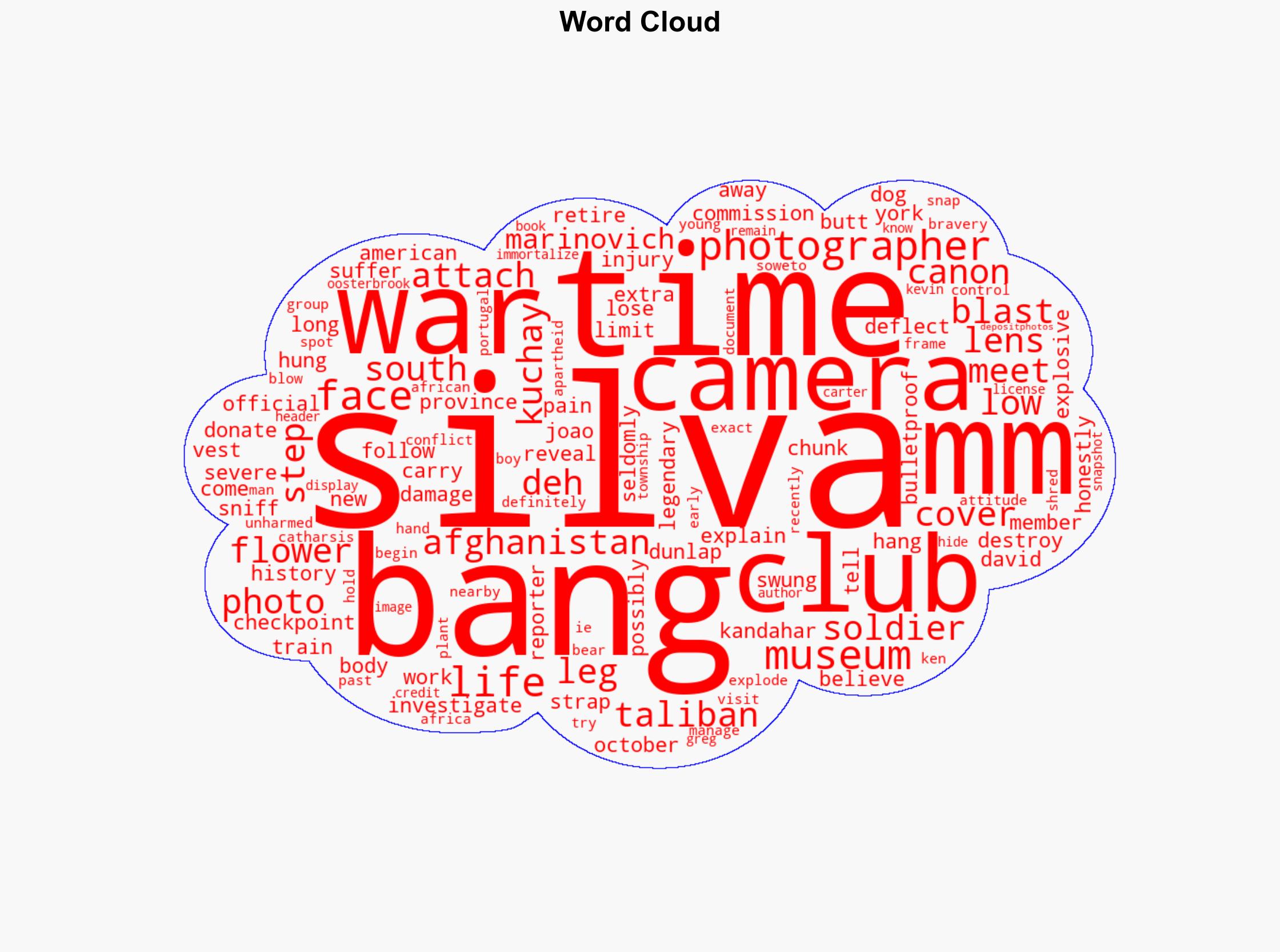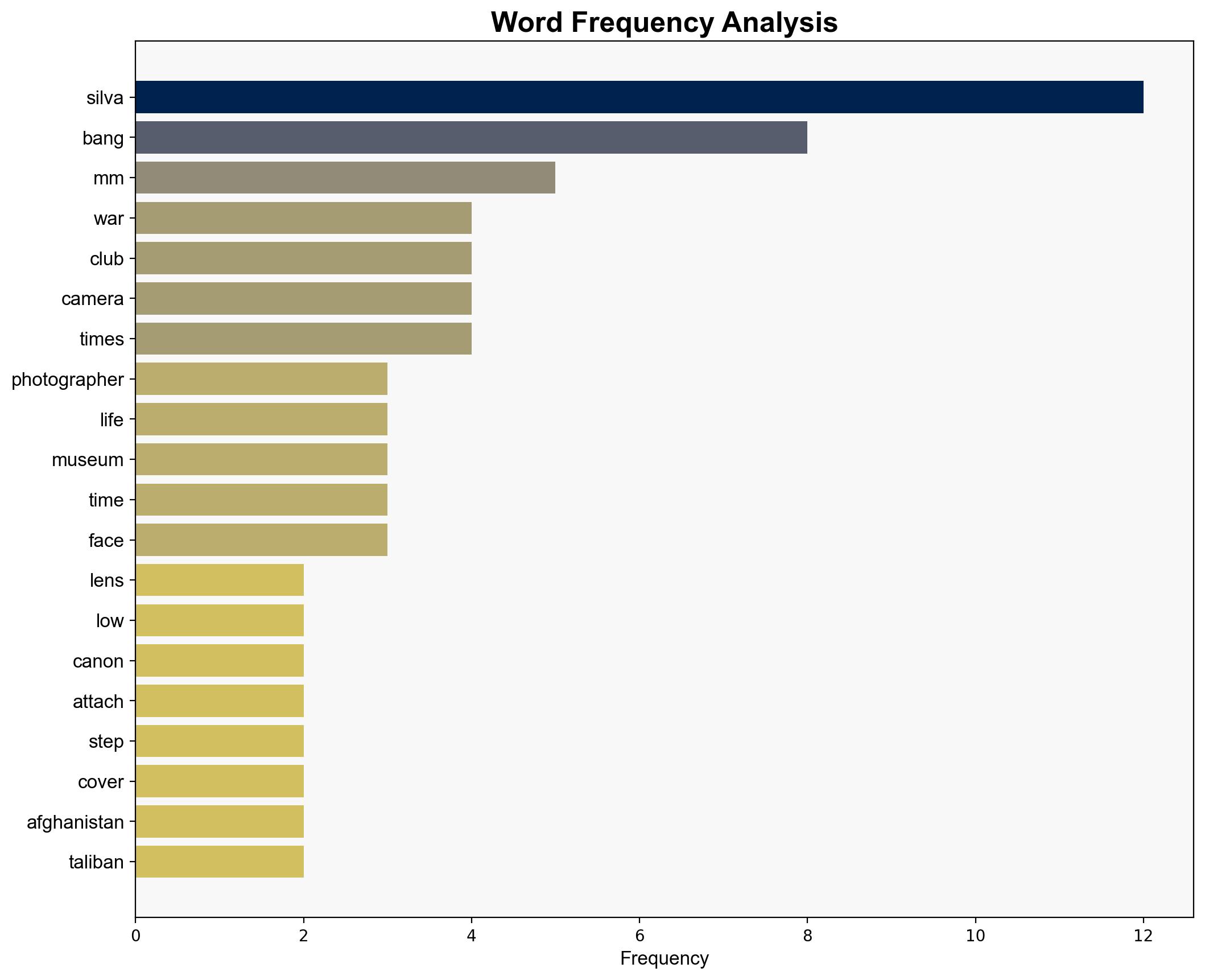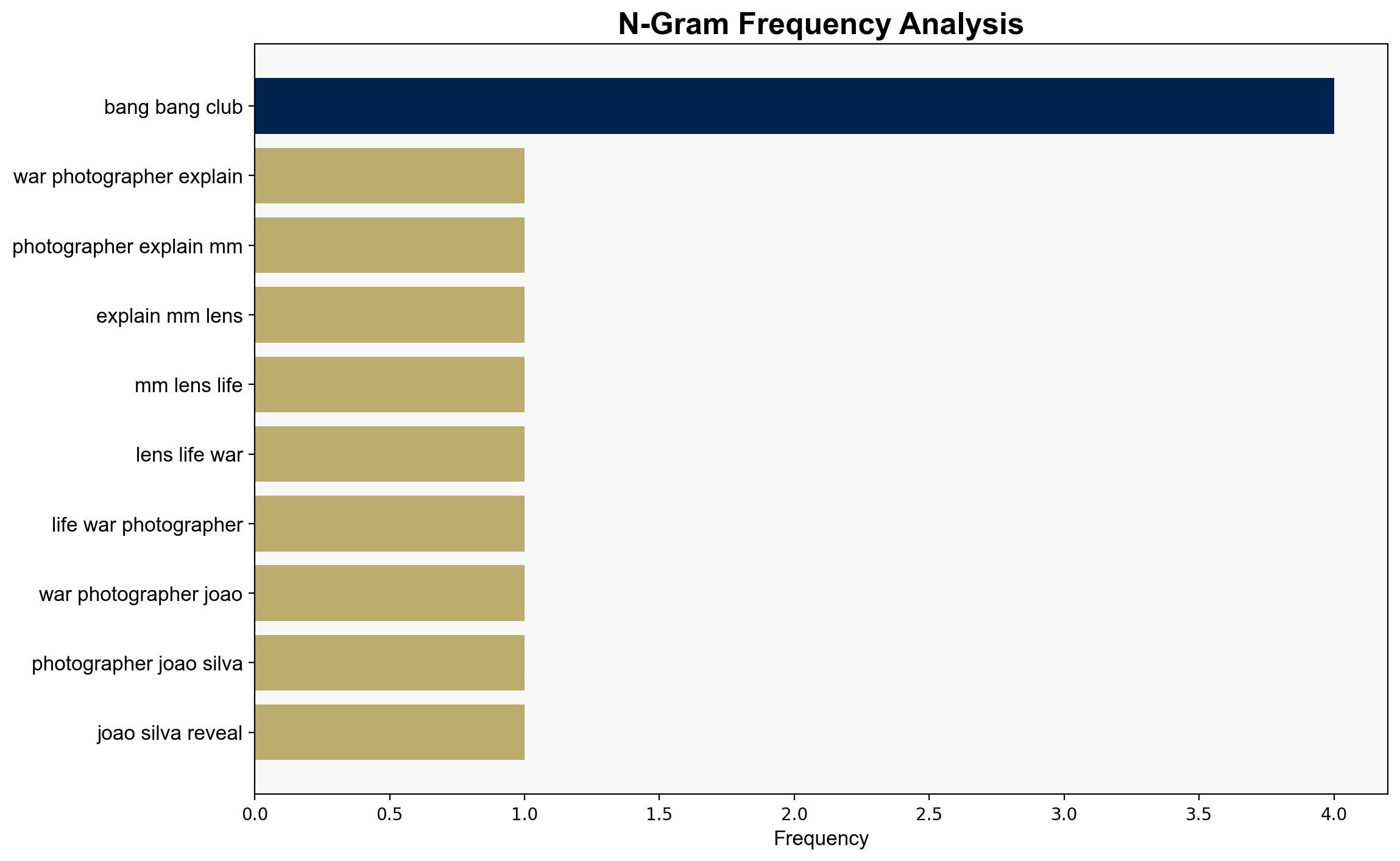War Photographer Explains How a 70-200mm Lens May Have Saved His Life – PetaPixel
Published on: 2025-09-02
Intelligence Report: War Photographer Explains How a 70-200mm Lens May Have Saved His Life – PetaPixel
1. BLUF (Bottom Line Up Front)
The most supported hypothesis is that Joao Silva’s camera equipment inadvertently provided a physical barrier that mitigated the impact of an explosive device, potentially saving his life. Confidence in this hypothesis is moderate due to the anecdotal nature of the evidence. It is recommended to further investigate the incident’s details and consider additional protective measures for journalists in conflict zones.
2. Competing Hypotheses
1. **Hypothesis A**: The 70-200mm lens physically deflected the blast, reducing the severity of Silva’s injuries. This hypothesis is supported by Silva’s own account and the physical positioning of the camera at the time of the explosion.
2. **Hypothesis B**: The lens did not significantly alter the outcome of the explosion, and Silva’s survival was primarily due to other factors such as his body position or the nature of the explosive device. This hypothesis considers the possibility of cognitive bias in attributing survival to the lens.
3. Key Assumptions and Red Flags
– **Assumptions**: Hypothesis A assumes the lens’ material and positioning were sufficient to deflect the blast. Hypothesis B assumes that Silva’s account may be influenced by survivor bias.
– **Red Flags**: The lack of independent verification of the incident details and reliance on a single source narrative. Potential bias in Silva’s retrospective attribution of his survival to the lens.
4. Implications and Strategic Risks
The incident highlights the risks faced by journalists in conflict zones and the potential for unconventional protective measures. It underscores the need for improved safety protocols and equipment for media personnel. The psychological impact on journalists and the potential for increased media scrutiny in conflict areas are notable considerations.
5. Recommendations and Outlook
- Investigate the incident further to gather more comprehensive data on the explosion and Silva’s injuries.
- Enhance safety training and equipment for journalists in conflict zones, considering unconventional protective measures.
- Scenario Projections:
- **Best Case**: Improved safety measures lead to reduced journalist casualties in conflict zones.
- **Worst Case**: Continued reliance on anecdotal evidence without systematic safety improvements results in further casualties.
- **Most Likely**: Incremental improvements in safety protocols based on individual experiences and technological advancements.
6. Key Individuals and Entities
Joao Silva, David Dunlap, Ken Oosterbrook, Greg Marinovich, Kevin Carter.
7. Thematic Tags
national security threats, journalist safety, conflict zone reporting, media protection




